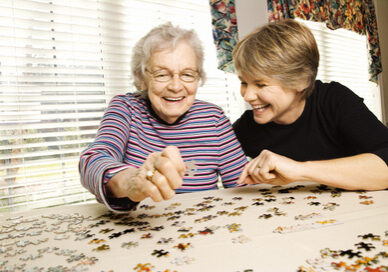Home | Altura Blog |
Loneliness and Social Isolation
November 26, 2021 | Altura Blog
Topic:
Individual Wellbeing
Winter and the time around Christmas can be the most profound times for individuals to experience loneliness or social isolation.
Loneliness describes the feeling when the desired level of social contact is not met, whilst social isolation describes the measurement of relationships by quantity rather than quality.
Physical and social distancing over the last 18 months has had a significant impact on older people’s experience of isolation, especially in residential care settings. It’s vital that health and social care staff are able to recognise factors that increase the risk of loneliness and isolation in the run up to Christmas and over the winter months.
What factors are likely to cause loneliness and social isolation?
Anyone at any age can experience loneliness and social isolation. However, there are particular age related circumstances that can increase the risk of loneliness developing for the older population. These include:
- Loss of significant relationships. This may occur due to the loss of a partner, moving away from social circles when entering residential care or family moving away.
- Reduced social engagement opportunities. This may be as a result of ill health, reduced support network or financial burdens.
- Living alone. Older individuals from the LGBTQ+ community are more likely to live alone or have reduced contact with relatives, and due to social inequalities experienced, will be less likely to engage with local services.
- Development of sensory impairments. This can make communication and interaction more difficult, leading to individuals withdrawing from engagement with others.
What are the consequences of persistent loneliness and social isolation?
Persistent loneliness is the term used when the feeling and experience of loneliness doesn’t pass and remains long term. Where social isolation may be temporary and quickly overcome with the increase of contacts, loneliness can take longer to identify, manage and resolve as it is a personal concept, and each individual will have their own experience of it.
The consequences of loneliness and social isolation can be detrimental to a person’s physical and mental health and wellbeing.
- Depression and anxiety
- Poor quality of life
- Heart disease
- Stroke
- Premature death resulting from factors such as increased smoking, drinking and reduced physical activity.
What can staff do to support individuals experiencing loneliness?
The first step is to recognise when an individual is at risk of experiencing loneliness or social isolation. It can be obvious, such as the individual sharing how they are feeling. Or it can be more subtle and require further discovery from staff. It’s important to have greater awareness:
- When a person enters residential care or begins receiving care
- Where there are gaps in a person’s interaction, such as not joining activities and events
- When families, friends and others are visiting less often
- Where the individual is showing signs and symptoms of depression or anxiety
It’s also important that staff recognise other circumstances that could trigger loneliness such as:
- Annual events like Christmas, Easter or the winter period
- A bereavement anniversary or following a significant loss, such as the death of a partner, family member or friend
- Significant changes to health that impact the person’s ability to engage with others
Look for and act on clues such as:
- Self neglect
- Poor or increased appetite
- Withdrawal
Altura Learning’s top 5 tips for reducing the risk of loneliness and social isolation where you work
- Utilise technology in care provisions to make meaningful connections. The internet, smart phones, social media and video calls can help maintain relationships and rapidly reduce the distance for individuals whose family or significant others live far away or are unable to visit frequently.
- Join a befriending service. There are many ways to support a befriending service in your organisation. Sign up to a local or national initiative where individuals are paired up and communicate with each other, receive visits and build supportive relationships.
- Make time to ask questions and listen. Take the time to ask people how they are feeling, be patient and listen when the person wishes to respond. Alternatively, just being beside someone and offering your time can be a comfort.
- Engage the community. Seek out appropriate and accessible transport for individuals to attend local events or groups. Invite local schools or performers to visit and engage with individuals.
- Loneliness and social isolation awareness. Raise awareness for staff, visitors and individuals about the topic to help promote collaboration and familiarity with the support services available. It may be helpful to:
- Provide resources and materials around the subject
- Encourage conversations and form group discussion forums
- Engage staff in regular training
Loneliness and social isolation can be detrimental to an older person’s physical and mental wellbeing. It’s vital that health and social care staff take the time to recognise factors that increase the risk of loneliness and isolation. Be creative, look for different ways to reduce the risk of loneliness and social isolation for the people you care for.


